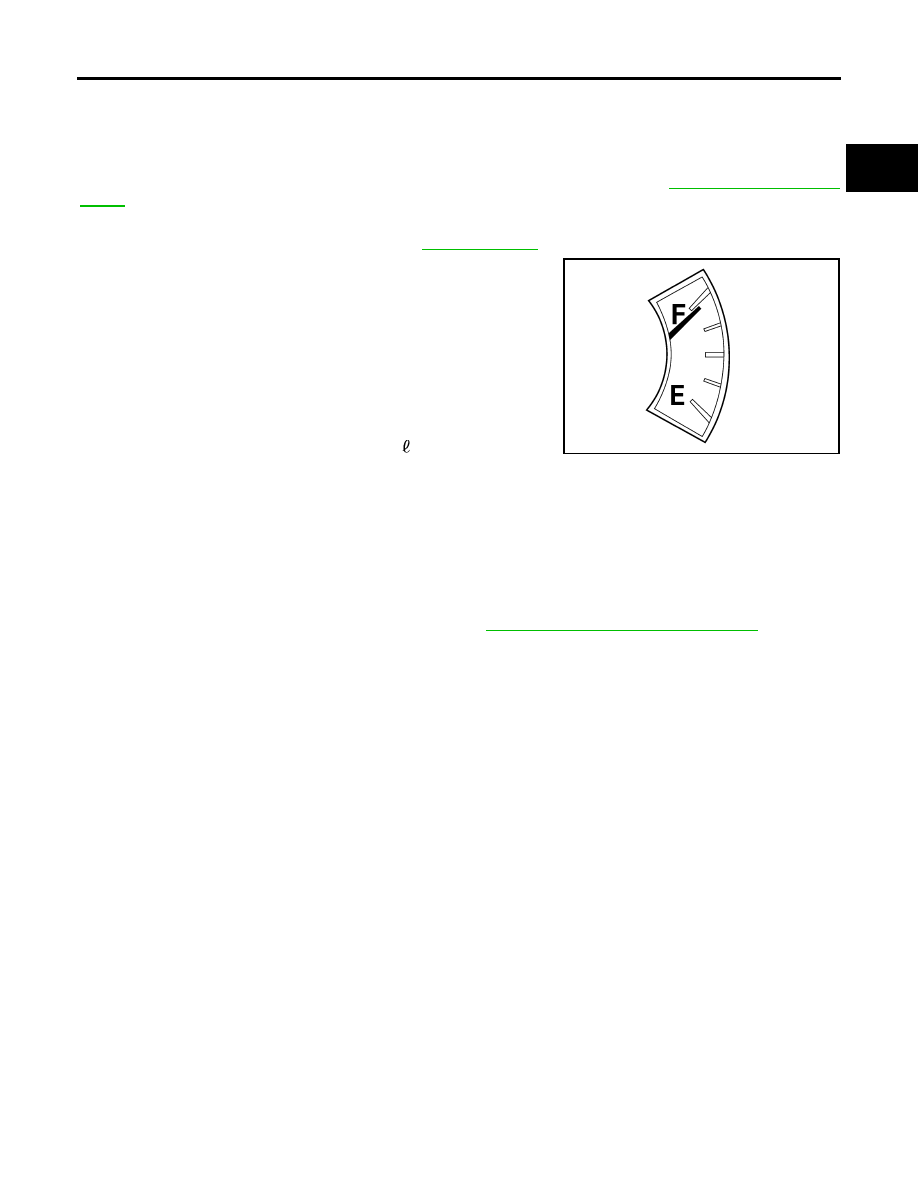Nissan Pathfinder (2007 year). Manual - part 257

FUEL TANK
FL-13
C
D
E
F
G
H
I
J
K
L
M
A
FL
2007 Pathfinder
REMOVAL
WARNING:
Follow the “General Precautions” before working on the fuel system. Refer to
1.
Remove the fuel filler cap to release the pressure from inside the fuel tank.
2.
Remove the LH rear wheel and tire. Refer to
3.
Check the fuel level on level gauge. If the fuel gauge indicates
more than the level as shown (full or almost full), drain the fuel
from the fuel tank until the fuel gauge indicates the level as
shown, or less.
NOTE:
Fuel will be spilled when removing the fuel level sensor, fuel fil-
ter, and fuel pump assembly for the fuel level is above the fuel
level sensor, fuel filter, and fuel pump assembly fuel tank open-
ing.
●
As a guide, the fuel level reaches the fuel gauge position as
shown, or less, when approximately 15 (4 US gal, 3 1/4 Imp
gal) of fuel are drained from the fuel tank.
●
If the fuel pump does not operate, use the following procedure to drain the fuel to the specified level.
a.
Insert a suitable hose of less than 15 mm (0.59 in) diameter into the fuel filler pipe through the fuel filler
opening to drain the fuel from fuel filler pipe.
b.
Remove the fuel filler pipe shield.
c.
Disconnect the fuel filler hose from the fuel filler pipe.
d.
Insert a suitable hose into the fuel tank through the fuel filler hose to drain the fuel from the fuel tank.
4.
Release the fuel pressure from the fuel lines. Refer to
EC-79, "FUEL PRESSURE RELEASE"
.
5.
Disconnect the battery negative terminal.
6.
Disconnect the lower fuel filler hose from the fuel tank, the EVAP hose, and the vent pipe quick connector.
●
Disconnect the fuel feed hose from the molded clip in the side of the fuel tank.
Disconnect the quick connector as follows:
●
Hold the sides of the connector, push in the tabs and pull out the tube.
●
If the connector and the tube are stuck together, push and pull several times until they start to move.
Then disconnect them by pulling.
13. Fuel filler hose grommet
14.
Fuel filler cap
15. EVAP canister hose
16. Clamp
⇐
Front
WBIA0390E